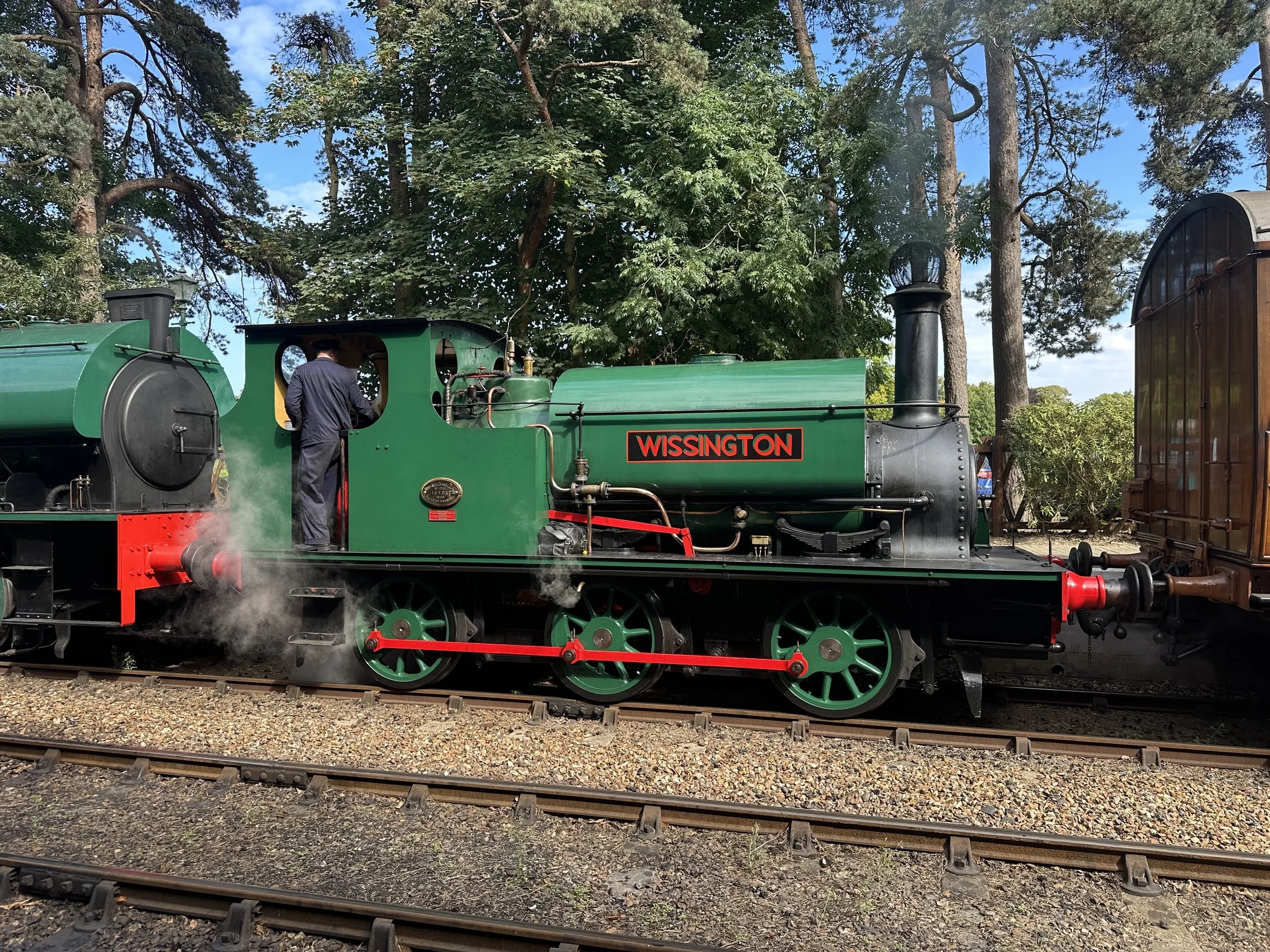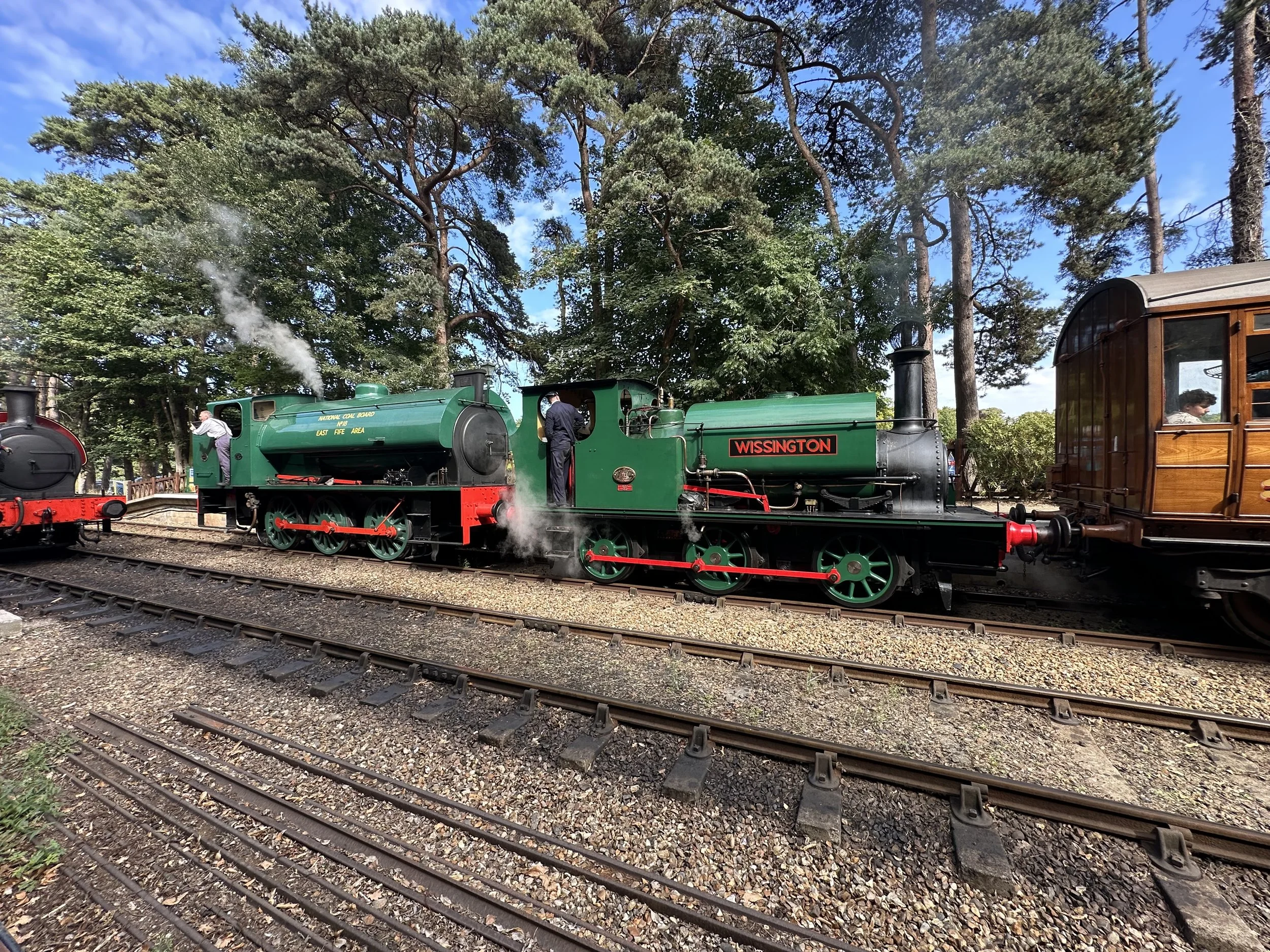
Wissington Light Railway
The Wissington Light Railway was first established in 1905 to aid the local farms in Norfolk that were being utilised for an ammonia plant. Initially, the railway was drawn by horses and connected to an ammonia factory located at the present-day sugar beet factory site. However, it was shut down in 1917 due to flooding, but reopened seven years later in 1924. In 1925, a sugar beet factory was constructed at Wissington, which had no road access at the time, so the traffic depended on the railway and barges from the river. However, the factory now has improved road access, and trucks transport all the beet traffic from a radius of approximately 50 miles. The Wissington Railway was a branch off the Downham Stoke Ferry Line that ran between Denver and Stoke Ferry at Abbey and West Dereham. It was unique because an Act of Parliament was never granted to construct the railway. In addition to railway transportation, three river tug barges named Wissington-Hilgay-Littleport were used to pull steel barges with coal or beet. Throughout its existence, various branches were opened and closed to serve various fen farms in the local region. During World War II, the factory was considered essential, and the Ministry of Agriculture took over the railway in March 1941. River traffic was discontinued in 1943. The Ministry of Agriculture enlisted Italian prisoners of war to work on the railway and improve the road access to the factory and farmland. After the war, the Ministry of Agriculture purchased the railway entirely in 1957. As road access began to take over most of the traffic to the factory and farmland, parts of the line started to shut down. The railway line closed permanently in 1982. Today, the only surviving structure is an old bridge near the beet factory in Wissington. The beet factory is still in operation and is used during the winter beet campaign.
Also surviving to this day, the Wissington steam locomotive, an 0-6-0 ST, is still in operation on the North Norfolk Railway.
For more information, please click the link below for a great page from KL Magazine.
GOOGLE MAPS
Disused railway bridge
"I discovered the only surviving remains of the old railway, which is a disused railway bridge located just outside of Side Wissington. I have also been informed that there might be another bridge closer to the factory. Alternatively, it may have been demolished and replaced with a bridge to carry industrial pipes to the sugar factory."
Aerial Photos from the Beet factory showing the light railway
Click on the images above to access the Photo page, courtesy of Historic England.
Wissington Factory in 2015
© Copyright Michael Garlick and licensed for reuse under this Creative Commons Licence.
0-6-0 ST “Wissington”
Wissington is a Countess of Warwick design steam locomotive built in 1938 by Hudswell Clarke of Leeds, commissioned by the British Sugar Corporation. It had a relatively lightweight axle load of approximately 8 tons. Wissington spent most of its working life at the Wissington Sugar factory in Norfolk, with a brief spell at a factory in Spalding, Lincolnshire. As diesel shunters arrived and more traffic was transferred to the roads in the 1970s, Wissington became a spare. In the early 1970s, it was kept in storage until 1978, when it became the last steam locomotive in commercial ownership in East Anglia. The M&GNJRS took notice of Wissington and took it to the North Norfolk Railway for preservation. After a cosmetic restoration, the engine remained on static display at Sheringham. By the late 1990s, restoration on Wissington was well underway, and by the mid-2000s, the boiler work was also well underway. In 2010, the engine was steamed back into life for the first time in many years. In 2012, the engine passed its steam insurance examination and shortly after, for the first time in over 50 years, the engine left the North Norfolk Railway on loan for the Mid Suffolk Light Railway. Wissington returned to the North Norfolk Railway in 2013 for the steam gala and was used for shunting and freight movements. During 2018, the locomotive was based at the Colne Valley Railway until the June, when it moved to Beamish Museum for a three-month period. The locomotive spent some time on loan at the Mid Suffolk Railway and returned to the North Norfolk Railway in January 2024.
Photos used below with permission from Geograph with credit on photographs.
Historic Maps
Denver Junction that took the Stoke ferry to Denver line onto the Lynn Ely Cambridge Line.
The Wissington Light Railway.
Throughout its life various branches were opened and closed. Following on from the beet factory.
"I would like to express my gratitude to the National Library of Scotland for providing the historic maps used in the above content."

























